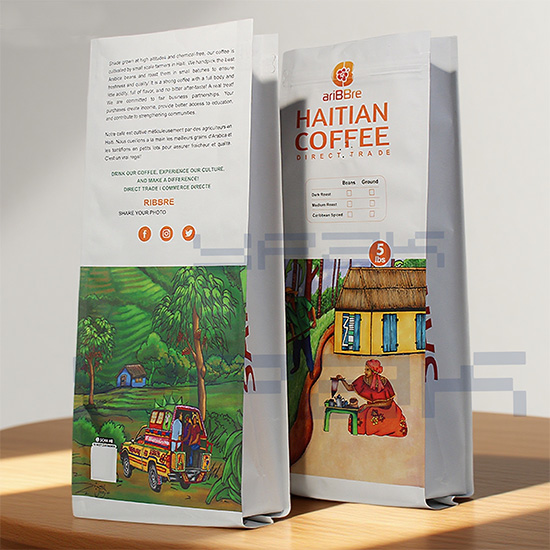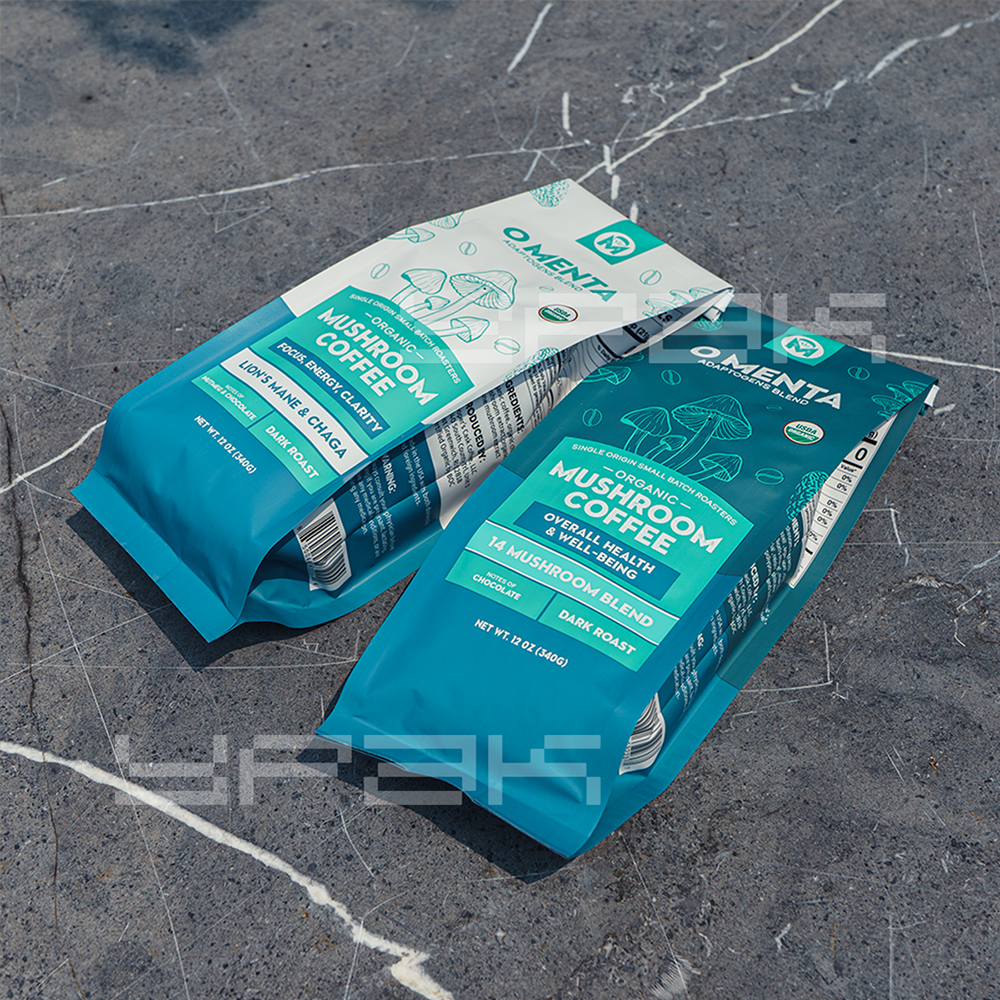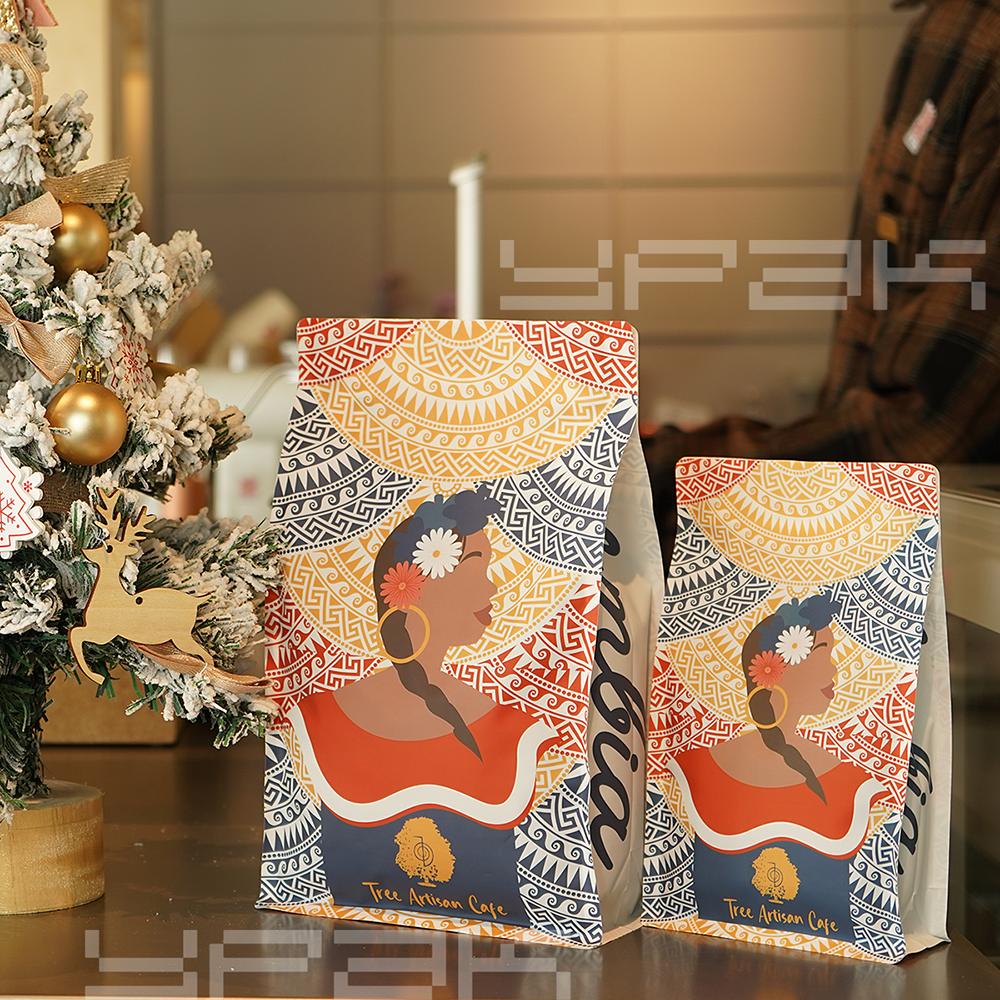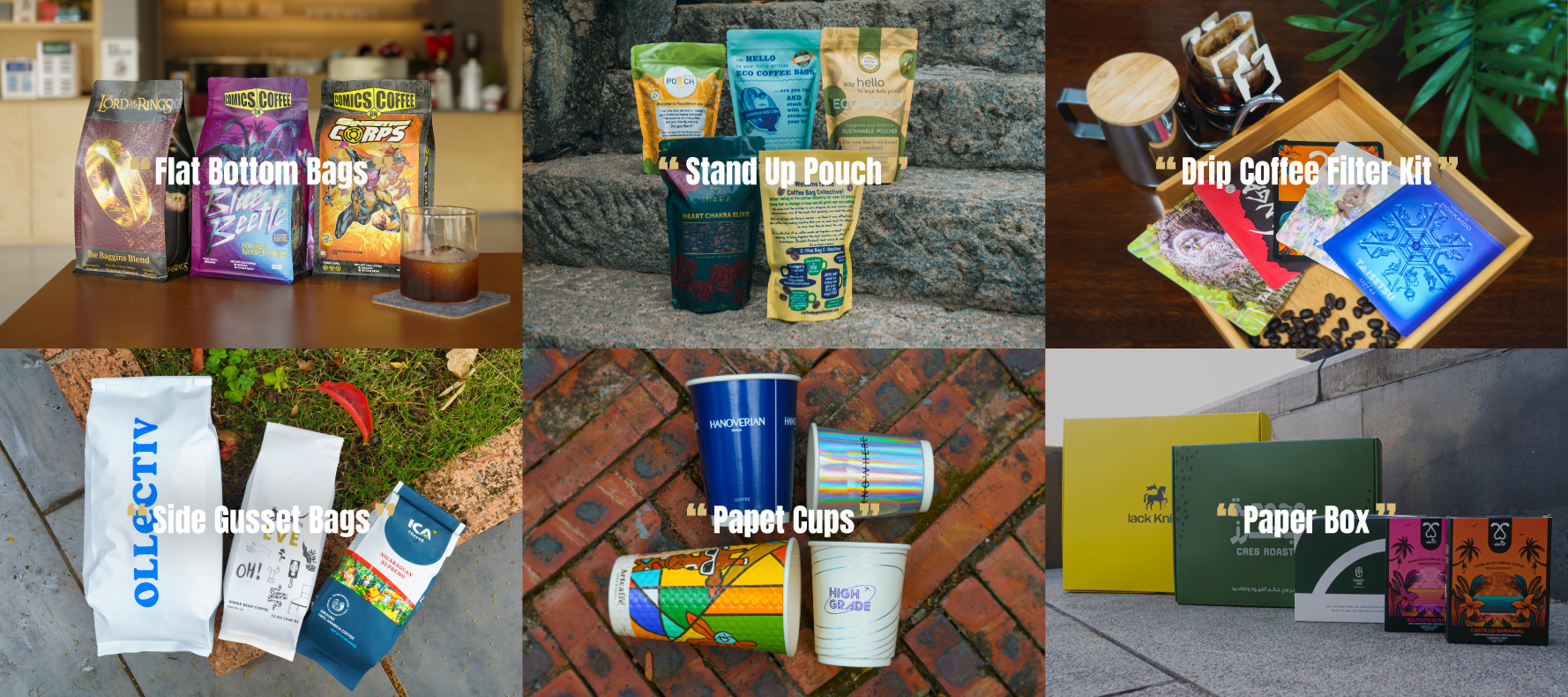Brewing a Better Brand: The Complete Guide to Coffee Bag Design
In a crowded marketplace, your coffee bag is more than a container. It is the initial way that a customer experiences your brand. Sometimes it's the only way. The design of a great coffee bag tells a story. It protects the product. And it drives sales.
This guide will take you through that process in its entirety. We’ll take care of the basics — like the types of bags and materials. We will then create a brand plan. You'll learn about design details. And you’ll learn exactly how to make your vision happen. Develop a coffee bag that actually represents your brand.
The Foundation: Picking the Right Bag for Your Beans

Before you even consider colors or fonts you have to select the right bag. The bag’s material and construction help to preserve the freshness of your coffee. They also look good on the shelf. This choice affects your budget. It affects your brand's look. And it makes a difference in the quality of your coffee.
Material Matters: Protecting Your Product
The material of your bag safeguards your beans against their foes. "These [enemies] are oxygen, light and moisture. They can be made from kraft paper if you want a natural finish. Mylar gives a strong barrier. Bioplastics offer an eco-friendly choice. Each offers varying degrees of protection.
The one way degassing valve is an important component of any coffee bag packaging design. Roasted coffee gives of gas carbon dioxide. This valve lets the gas out. But it doesn't let oxygen in. This prevents bursting of the bag. And it’s good at keeping the coffee fresh.
Bag Structure: Types of Coffee Bags
The structure of your bag affects how it looks on a shelf. It also affects how easy it is to use. Looking at various types of coffee pouches is a key step. You need to match your product with the right packaging. Below is a simple comparison of popular bag types.
| Bag Type | Pros | Cons | Best For |
| Stand-Up Pouch | Great shelf presence, easy to display. | Can be less stable when not full. | Retail shelves, smaller quantities. |
| Side Gusset Bag | Classic look, cost-effective, good for bulk. | Needs to be laid down or clipped. | Bulk wholesale, food service. |
| Quad Seal Bag | Very stable, four panels for design. | More complex sealing, higher cost. | Premium brands, retail shelves. |
| Flat Bottom Bag | Looks like a box, very stable, premium. | Higher cost than simpler bags. | High-end retail, specialty coffee. |




A complete guide to coffee packaging design can help you learn more about each bag type.
Key Features for Function
Good function makes customers happy. Resealable zippers or tin ties and gussets can help coffee stay fresh once opened. Some bags have clear windows. The latter allow customers to see the beans. This can build trust. The coffee packaging design considers how the customer will interact with the bag at home.
The Strategic Plan: Before You Think About Color

A great design for a coffee bag is not just an aesthetic exercise. It is about smart thinking. Before You Need a Designer or before you can choose a color, you must have a plan. This planning phase will help you respond to important questions. It will also save you from expensive errors.
Who Are You Selling To?
First, define your ideal customer. Are you selling to coffee aficionados who love a story about where the beans come from? Or are you appealing to harried parents who need a fast and easy brew? Understanding your audience dictates every design decision you take.
What is Your Brand's Personality?
Next, consider your brand’s personality. Is it modern and simple? Rustic and traditional? Bold and fun? Or is it a luxury brand? Your brand’s personality should be reflected in your coffee bag design.
What Makes Your Coffee Special?
What makes your coffee different? This is your point of differentiation. It might be your single-origin beans. Could be the roasting technique. Or maybe it’s your insistence on supporting fair trade farms. Your design should reflect this value unambiguously.
Where Will Your Coffee Be Sold?
And finally, consider where your coffee will be seen. But a design for a crowded supermarket shelf must be bold. It needs to differentiate itself from the competition. A glamorous look for a hushed cafe or an online store. The best coffee packaging is also designed in such a way it fits in where it should.
The Parts of an Effective Coffee Bag Design

With your plan in place, we can consider the elements of a successful design. A good coffee bag is a delicate balance of beauty and information. It needs to catch the eye. And it has to provide the customers the information they need to make a decision.
Visual Order: What Catches the Eye First?
Visual order is the way you direct a customer’s eye. It instructs them what to focus on first, what next and what next.
• Logo & Brand Name: These should be easy to see and remember. They are the heart of your brand identity.
• Color Palette: Colors create feelings. Brown and green feel earthy. Black can feel modern or fancy. Bright colors feel energetic and bold.
• Typography: The fonts you choose say a lot about your brand. Serif fonts can feel traditional. Sans-serif fonts often feel modern and clean.
• Imagery & Illustration: Pictures, drawings, or patterns can tell your brand's story. They make your coffee bag design unique. Looking at different coffee bag design ideas shows how elements work. • • Things like playful patterns or simple color schemes can attract specific customers.
The Must-Have Information
In addition to the visuals, the inside of your bag should offer crucial data. These details are what customers rely on in order to understand your product. They need them to buy something.
• Coffee Name / Blend Name
• Origin / Region (e.g., Ethiopia, Colombia)
• Tasting Notes (e.g., "Chocolate, Toasted Almond, Berry")
• Roast Level (Light, Medium, Dark)
• Net Weight
• Roast Date
• Whole Bean or Ground
The Coffee Maker to Designer Process: A Step-by-Step Guide

Turning your ideas into a real bag involves a clear process. This step-by-step guide will help you manage your coffee bag design project. It will help you work well with partners. Following these steps helps avoid common problems.
Step 1: Create a Complete Design Brief. Use the answers from your planning to write a clear guide for your designer. Include your target audience, brand personality, and what makes you special. Include all required text. The better the brief, the better the result.
Step 2: Find the Right Partner. You can hire a freelance designer. Or you can work with a full-service packaging company like YPAK COFFEE POUCH Freelancers can be great for creative work. A full-service company can handle everything from design to printing and production.
Step 3: The Dieline. Your packaging partner will provide a dieline. This is a flat template of your bag. It shows where to place your artwork. It marks out the seams, folds, and areas for features like zippers and valves. Make sure your design fits perfectly within this template.
Step 4: Review, Revise, and Approve. Always ask for a physical proof or sample. Colors on a computer screen often look different from colors printed on a bag. Check every detail: spelling, dates, colors, and logo placement. Once you approve it, it goes to production.
Coffee Bag Design Ideas & Trends for Today
Looking at trends can spark new ideas for your brand. It helps you understand what today's coffee drinkers find appealing. Here are a few popular styles in coffee packaging design.
• Simple & Clean Lines: This trend uses simple fonts and lots of white space. It focuses on key information. It feels modern, confident, and clean.
• Bold & Bright Illustrations: Custom artwork makes a bag stand out. These designs use bold colors and unique illustrations. They create a strong personality and tell a story.
• Green & Earthy Looks: As more people care about the planet, designs are showing this. These bags often use kraft paper and muted colors. They have clear messages about being eco-friendly.
• Vintage & Retro Revival: Some brands look to the past for ideas. These designs use classic fonts and graphics. They create a feeling of trust and tradition. Many of the most creative coffee packaging examples today blend vintage charm with modern, bold graphics. Brands like Stumptown and Verve do this very well.
You can see a gallery of these different styles on various coffee bags to get a better sense of what might fit your brand.
Conclusion: Your Bag is Your Brand's First Handshake
Your coffee bag design is a powerful tool. It is your silent salesperson. It's your brand ambassador. And it's your promise of quality to the customer. A well-planned bag is a blend of smart strategy, good function, and beautiful art. By above those steps, you can create packaging that protects your beans. And it will build a strong, memorable brand.
Frequently Asked Questions (FAQ)
Answer: In addition to your brand name, the key information for customers is the roast date, tasting notes, origin and whether the coffee is whole bean or ground. This is the kind of information that plays into their purchasing decision and brewing experience.
Answer: It depends a lot 28. Paying for a pre-made template can be quite inexpensive. There’s a spectrum of a few hundred to several thousand dollars in cost to hire a freelance designer. Engaging a full-service agency is the most costly. But it provides the fullest support.
Response: Green coffee bag design is all about materials that are recyclable or compostable. It can also mean using recycled-content materials. It also involves using environmentally-friendly inks such as water based inks. And it involves incentivizing consumers to dispose of or reuse the packaging appropriately.
Answer: It is a small valve that allows carbon dioxide out. This gas is released by freshly roasted beans. Except that the valve doesn’t allow oxygen in. Yes, if you need to package newly-roasted coffee. It also maintains taste and stops the bag from exploding.
Labels are also versatile and cost effective for small runs. They’re great if you have lots of different types of coffee. You can carry the same bag. Direct printing will look much more highend with no seams. The machine is favorable for high yield production instead of small production quantities.
Post time: Oct-16-2025







